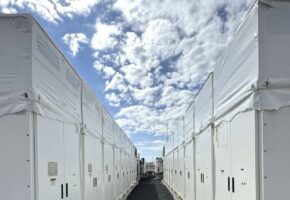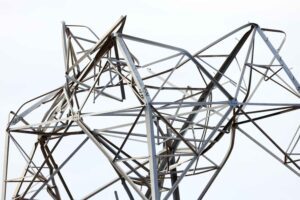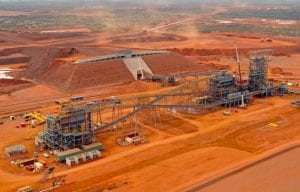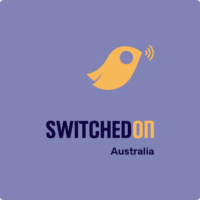The NSW state Labor government insists that its long anticipated deal with Origin Energy for the subsidised extension of its Eraring coal generator is not about corporate welfare. So let’s just call it for what it is: Political welfare.
The deal to extend the life of Australia’s largest coal generator – 2.88 GW – is being sold as necessary to “keep the lights on”, but there is no guarantee that it will do that.
It is being predicated on the Australian Energy Market Operator’s latest reliability outlook that forecasts potential breaches of the reliability standard in coming years – but only in extreme conditions, if generators break down or in the midst of a heatwave, when they often do.
The deal with Origin does not directly address the threat of blackouts. It only requires Origin to deliver a minimum six terawatt hours of electricity a year – less than half the power station’s output in 2023 – but there appears to be no condition in the underwriting agreement to deliver any power when it might really be needed.
So NSW taxpayers will be on the hook for a bill of up to $225 million a year to have Origin running two of its Eraring coal units through the middle of the night – which is quite possibly the last thing that the grid or the country’s emissions targets need.
When the shit hits the fan in a supply crisis in a summer heatwave, or when a major coal plant trips, it will not be held accountable.
Given the age of its units, it may well be a trip of one of Origin’s own generators that causes that shortfall – one of the so-called “tail risk” events that keeps the AEMO people awake at night. They do not find a grid populated with ageing coal clunkers particularly comforting in a crisis.
The potential shortfall identified by AEMO in its updated reliability document – known as the Electricity Statement of Opportunities – is for just over 500 MW. AEMO makes it absolutely clear that it has the resources – through its various reserve capacity options – to keep the lights on to ensure that the reliability standard is not breached.
But given the $450 million that the taxpayers may be up for over the next couple of years, wouldn’t it have been a little smarter to actually use that money to build a big battery – and a really big and useful battery can be built for that price – rather than subsidise the extended operations of an old coal clunker?
It is especially galling because Origin has done precisely zero to fill in the potential gap caused by the Eraring closure, even though it was flagged in early 2022. It has not built a single new megawatt of capacity.
Yes, construction has started on a new battery at Eraring, but that was not scheduled to be completed by the advertised closure date of August, 2025. Other proposed developments are all years away from completion, or even construction.

What the extension of Eraring and the extra 6 TWh of supply are likely to do is to soften average wholesale electricity prices in NSW, which currently ranks with another coal dependent state Queensland as the highest in the country.
That also means – given the high cost of black coal and coal fired generation in NSW – that it is highly likely that NSW taxpayers will have to pay to keep Eraring open, rather than share in any modest profits that were offered in the lop-sided agreement.
The government benefits because the money is paid by taxpayers and highlighted as a single line in the state budget, and it won’t be on consumer bills.
It will be effectively out of mind, and given that Eraring closure is now extended to a few months beyond the next state election, that is exactly the effect the state government wanted. For that reason, the craven bailout was never in doubt. And it continues a shocking scorecard for the NSW state government on energy.
As Tim Buckley, from Climate Energy Finance, observes, Origin has “kindly offered” to share 20 per cent of any profits, capped at $40 million a year, but will share 80 per cent of the losses with the people of NSW, capped at $225 million per year.
“This is essentially Coalkeeper 2.0 – yet another massive coal subsidy funded by electricity users in NSW,” he said.
“It stands as a symbol of the failure of privatisation of key strategic assets like Eraring without consumer protections. Origin was paid net $75 million in 2013 to take ownership of Eraring, made billions of dollars of profits running that plant for a decade, and now is being paid to keep running the plant until replacement capacity is built.
“Heads, Origin wins; tails, we – the public – lose!”
But there is one other troubling aspect to this announcement. It was long suspected by energy analysts that the timing of this announcement would be made deliberately after the AEMO ESOO update, which they assumed would give it cover to deploy the “keep the lights on” mantra.
But why did AEMO – whose ownership is shared between government and industry – release its update at this time? Its annual assessment is due in just three months, and while AEMO says it follows a reassessment of the delivery of some key projects, there are question marks over some of these.
It cited the delay of the 400 MW, 1600 MWh Orana battery in NSW. Not so, says owner Akaysha Energy, which insists the project is on track to be delivered in early 2026, not the late 2026 cited by AEMO.
AEMO cited a delay in the opening of the South Australia government’s world-first hydrogen power plant to 2027. Not so, says state energy minister Tom Koutsantonis, who says it should be delivered in late 2025 or early 2026.
AEMO is right to be cautious about the timing of new developments, and particularly the new hydrogen one. But why put the report out now, if it wasn’t designed to provide political cover for the NSW government to hide its failures, and give reward Australia’s biggest energy retailer for its own abject failures?










